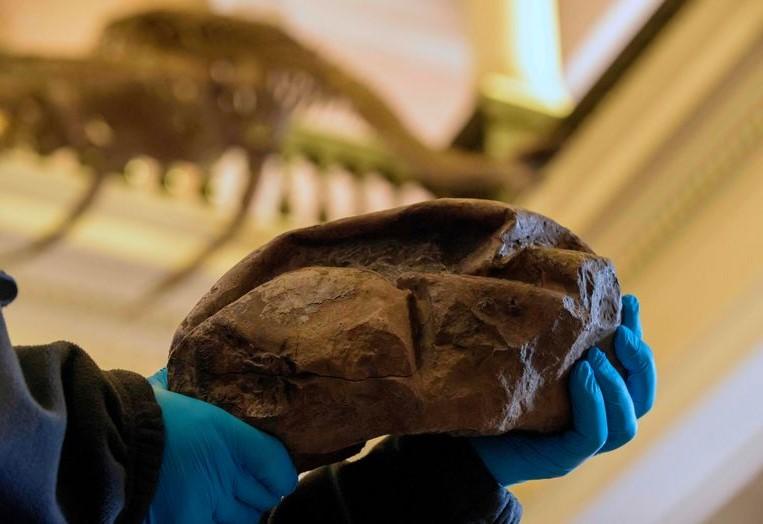A broken soccer ball. This resembles a mysterious 68 million-year-old fossil found on Seymour Island off the coast of Antarctica. But now it turns out to be a unique find: the fossil is the second-largest egg ever discovered and may have come from a dinosaur-era marine reptile.
The fossil egg is 29 by 20 centimeters and is therefore slightly smaller than the eggs of the extinct elephant birds that once lived in Madagascar.
Wild birds, crocodilians, and several dinosaurs laid hard-shelled eggs, but the Antarctic egg had a soft, parchment-like shell. “This new egg is Antarctica’s very first fossil egg and the largest soft egg ever discovered,” said Lucas Legendre, a paleontologist at the University of Texas and lead author of the study published in the scientific journal Nature.
“It looks a bit like a flat football: elongated, flat, with many folds and folds on the surface. One side is flattened, suggesting this is where the egg came in contact with the sea bottom. The eggshell is very thin and barely mineralized, like the eggs of lizards and snakes.”
The only creatures that lived in Antarctica at the time and were large enough to lay such an egg were marine reptiles, such as the Mosasaurus (mesh lizard) and the Plesiosaurus. The assumption that these animals did not lay eggs, but gave birth to their young alive, is being called into question by the new discovery.
“We suspect that these large reptiles had the same reproductive strategy as viviparous lizards and snakes, which lay very thin-shelled eggs that hatch immediately after laying,” Legendre said.
No remains of an embryo were found in the egg, and the mother’s skeleton could not be found to identify what animal had laid the egg. Possible options include mosasaur species up to 15 meters long and plesiosaur species up to 10 meters long, Legendre said.
The Mosasaurus and Plesiosaurus died out with the other dinosaur species after an asteroid hit Earth some 66 million years ago.
Scientists from the University of Chile and the Chilean Natural History Museum found the fossil in 2011. Baffled at their find, they initially called it “The Thing” after the title of a science-fiction movie.
“When we arrived at the camp, we asked the geologists who accompanied us if they had ever seen anything like it,” said Rodrigo Otero, a paleontological researcher at the University of Chile. “Their bewildered facial expression spoke volumes.”
